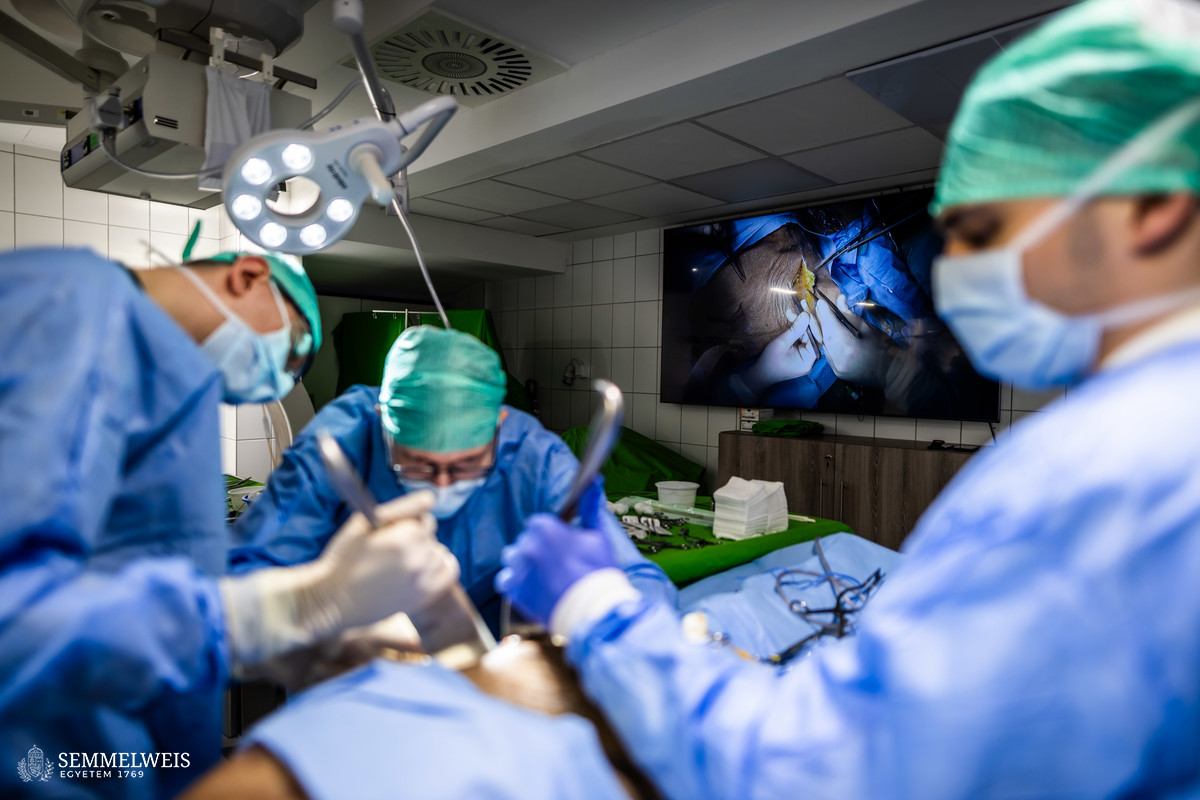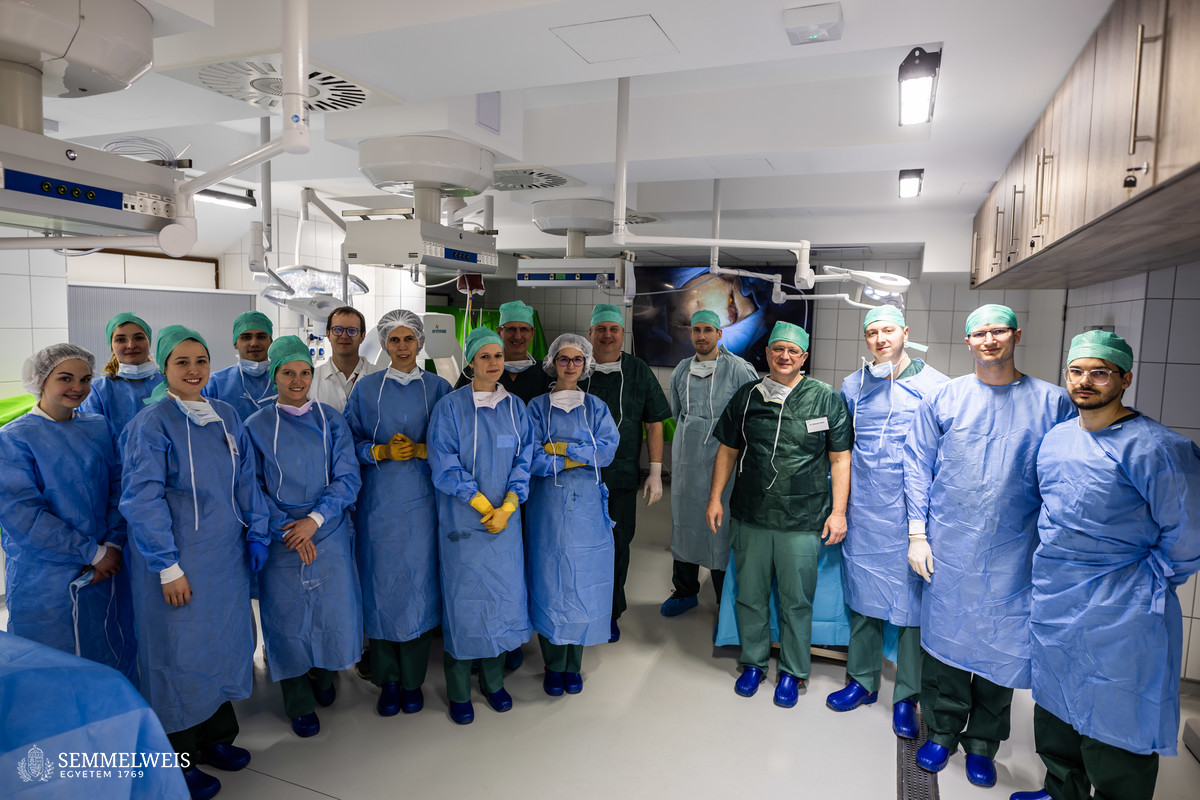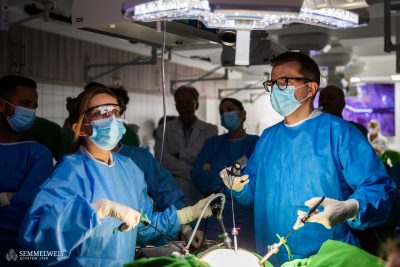Nowadays, 70-80 percent of vascular surgery is endovascular, which means it is performed inside the blood vessel and is less invasive. These modern techniques, which are less demanding for the patients, are therefore gaining ground, but this also means that vascular surgeons only encounter a limited number of open surgeries during their training period, emphasized Dr. Péter Sótonyi, Head of the Department of Vascular and Endovascular Surgery at the Városmajor Heart and Vascular Center of Semmelweis University. In his experience, the situation is similar in many European countries, where, as in Hungary, the revised medical training system allows for a vascular surgery qualification to be obtained separately from surgery. Thus, the course on open surgery organized by the department’s staff in the Interdisciplinary Cadaver Operating Room can fill a niche in the international training market as well.
In the operating room located in the Department of Anatomy, Histology and Embryology, the unique tissue fixation technique developed at the university offers the opportunity to practice surgical techniques in a uniquely realistic environment. The advanced vascular surgery course, held at the end of January, was attended by eight senior residents and young specialists from Hungary’s tertiary healthcare centers, which provide care for patients with the most severe conditions. The participants practiced exposure of the inguinal, axillary, iliac, and abdominal main arteries. They also had the opportunity to practice less frequently used techniques that require a lot of experience, such as medial visceral rotation, which may be the only way to access the aortic segment between the diaphragm and the renal arteries.
The next international open aortic cadaver workshop will be held at the end of May, as part of the 2nd Semmelweis International Vascular Symposium (SIVS). Once again, the event is co-organized by Semmelweis University and the Frank J. Veith International Society, whose mission is to provide advanced training for vascular surgery professionals. The former president of the society is Dr. Péter Gloviczki, who started his career at Semmelweis to become a world-famous vascular surgeon; today he is a member of the board of trustees of the Foundation for National Health Care and Medical Education.
The department plans to offer one international and one domestic course each year.
A unique opportunity in surgical training
The interdisciplinary cadaver courses, which simulate different clinical situations in a realistic setting, are housed in the Interdisciplinary Cadaver Operating Room, which was inaugurated at the end of 2022 in the Department of Anatomy, Histology and Embryology. The university courses are a unique offer in the surgical training market thanks to the use of a special tissue fixation technology developed by the department’s embalmer, Viktor Pankovics. The courses are organized by Assistant Professor Dr. Tamás Ruttkay and his team. Previous courses have included gastroenterology, cardiac surgery, gynecology, and abdominal surgery. The unique training courses are also aimed at the international market, as only a few cadaver training courses are available in Europe, although these are an undeniably effective way of developing surgical manual skills.
Pálma Dobozi
Translation: Judit Szabados-Dőtsch
Photos by Bálint Barta – Semmelweis University




